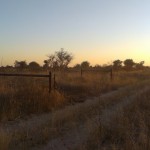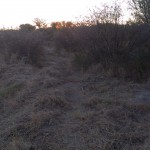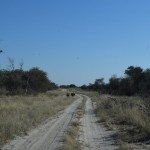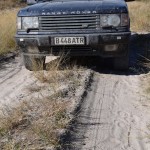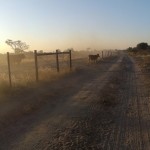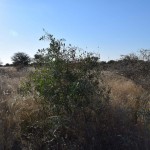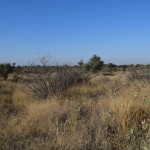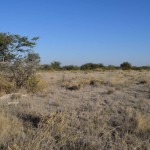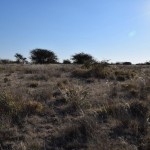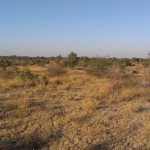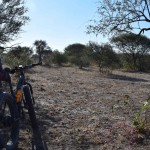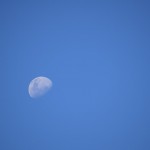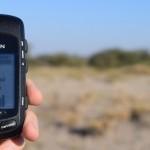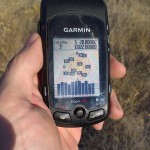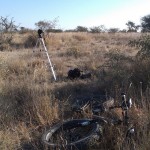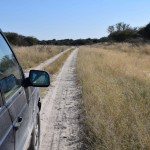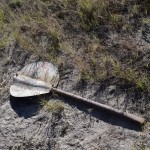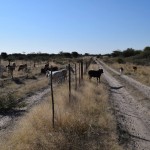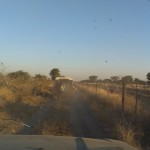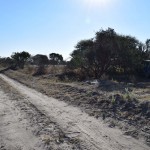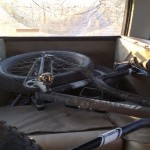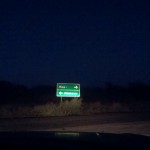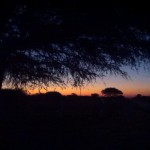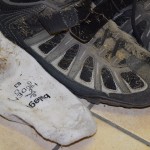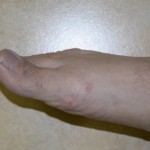The Idea
I’ve been aware of the Degree Confluence Project for a while now, and despite there being some unvisited confluences not too far from home I never got round to visiting them.
A few days ago a friend and I were putting the world to rights under the influence of anti-malarial medication, we got to the pleasures of following trails to see where they go, and my memory was refreshed. A visit to the DCP website for Botswana revealed an unvisited confluence not far from where we work, and having passed within a few kilometres earlier in the year I knew it would be possible to get with about 15km.
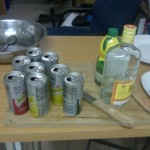
Google Earth revealed that since the previous visit the Botswana Government has created a cut-line and veterinary cordon fence passing within a few kilometres of the confluence.
Fast forward a couple of days to the weekend and by the time Sunday lunchtime came around I’d finished all my urgent work, so I loaded my bike in to the back of the car, left my “send help if I haven’t checked in by 18.00” instructions and set off from Toteng.
Getting There
The tar road is unremarkable, although it is getting old and full of potholes, with too many cattle, and overgrown… Absolutely avoid driving on this road at night. Fuel is usually available in Sehitwa and they do have a card-swipe machine – sometimes they have fuel on the same day that the card machine is working. Make sure you leave with enough fuel to get you back to where you came from or to the next village. Gumare has two petrol stations so that should improve your odds (assuming they are both still operating – I haven’t been that way for a few years).
The turn-off is a few kilometres north of Tsau, signposted for Gcwihaba (a most interesting cave system – worth visiting but try and book in advance for a guide to take you into the more complicated parts).
Most of the track is hard-pack but there are patches of soft sand year round, easier to pass if it has rained recently, but then you will be fighting with some short flooded sections. Exercise caution as they can be deceptively deep and muddy.
Tracks4Africa shows a track swinging off to the north-west after about 30km off-road but as the previous attempt on the confluence found it is impassable due to fallen trees (elephant are rife) and now overgrown from disuse. Rather proceed to the 40km mark and turn due north up the cut-line (almost, but not quite, on the alignment of of 22E). Note: On adding the link I see that T4A online map does not appear to show the main Tsau-Gcwihaba track or the veterinary fence.
The cordon fence has taken a beating from elephant, so it is very porous: watch out for wild animals and cattle coming out of the bush. There are also a variety of ground-nesting/resting birds so drive slowly to give them a chance to get out of the way.
At the corner of the fence I turned west and continued a couple of kilometres beyond to see if there were any new tracks heading north (I didn’t see the old track skimming the corner: too many cattle tracks). Saw a group of three Kori Bustard that ran for a little while, until one ducked into the grass and the other two took off. There were no signs of any other tracks, so I made an about turn and retraced. Watching the distance to destination on the GPS to see when it was closest, at this point I parked the car and switched to two wheels.
I beat a path straight (kind of) through the tussocky grass and thorny bushes, finding the T4A track after a few hundred metres: quite well defined here but no obvious signs of recent use by anything other than cattle. The bush-bashing continued for a couple more kilometres until I reached more open high-ground.
It looks like the area may at some stage have been inhabited: one overgrown thorn bush kraal and grass-free areas that may once have been homesteads. Satellite imagery shows a lot of fossil river channels, so it is possible that this area may once have been under the waters of the Okavango and the high ground could have been a seasonal island used by previous inhabitants of the area. Maps show a settlement called Malatshi nearby, I didn’t have time to explore but it looks like there may be some active cattle kraals to the south east, given the number of cattle along the cordon fence there must be people operating boreholes in the area.
For future visitors I suggest (guardedly…) leaving your vehicles at the fence corner and proceeding on foot along the fossil river channel visible on the satellite imagery: it would be a shame to spoil the wilderness by making a vehicle track to the confluence.
Note that this area is home to wild animals including elephant and big cats: be alert at all times. You could also break an ankle in the meerkat burrows.
On arriving within a few metres of The Spot I started The Confluence Dance to get the fabled 10 Zeroes, luckily The Spot was not in either of the bushes and I was able to set up my tripod right on the confluence for the required pictures of the cardinal compass points (requirements for documenting a confluence visit are at the DCP website).
Job done I packed up and started heading back towards the car, at which point my recently repaired freewheel mechanism stripped itself (again) so I was forced to walk/scoot the 2.5km back. Not a big deal in the scheme of things but it was putting me dangerously close to not being back in cellular network until after my “come help me” cut-off time, and the grass seeds were making it physically painful to walk as they penetrated my shoes and socks. Suffice to say it was a welcome relief to get barefoot and load the car.
At this point I had my second human contact since leaving the tar road (the first being a man on a donkey cart about 10km in) as a Land Rover Defender with game lodge logos on the doors appeared and asked if I was okay. I think he was also about to warn me about wild animals or something (“Just be careful of… right, yeah…”), but probably realised the futility of it all.
I followed them for a few kilometres down the fence, then they swung off on a trail going south-east and I didn’t see them again – maybe they stay in the vicinity of the cattle-posts visible on the satellite imagery.
Cellphone service reappeared about 10km from the tar road and I stopped the search before it started (15 minutes after my cut-off time), and proceeded to cruise home in the dark – taking it very easy due to black cows, lack of reflective road studs, every second oncoming vehicle having defective/misaligned headlamps and countless potholes.
Miscellaneous Pictures
[geo_mashup_map]
